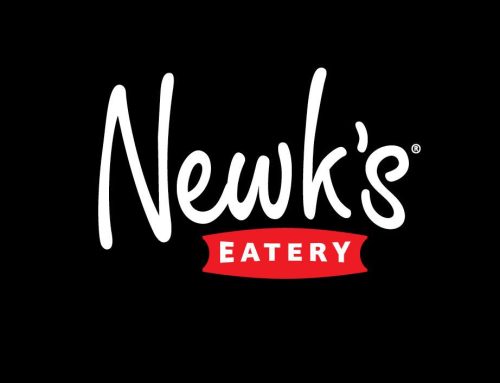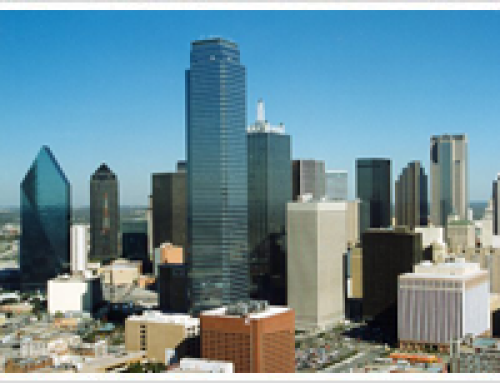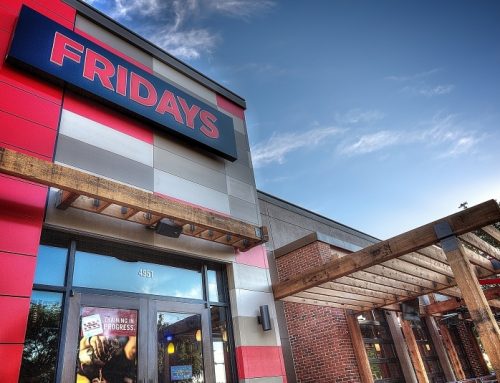Downtown Upturn:
Not long ago, New Orleans’ historic
Canal Street looked like a graveyard
for dead department stores. Newer
suburban malls had rendered the city’s
main shopping thoroughfare obsolete,
and grand buildings that once housed
D.H. Holmes, Krauss, Maison Blanche
and Woolworth’s sat empty as an
array of mom-and-pop tourist shops
mushroomed around them.
“On some blocks, the majority of retail has become a tourist-oriented mix of electronic stores, shoe stores, knick-knack and T-shirt
shops,” said Neil Kohlman, executive director of the Canal Street Development Corp. (CSDC), a municipal public benefit corporation. The
street also suffers from a perception of crime in some areas.
But change is afoot. Private and public funds are flooding back into Canal Street. Two of those empty department stores have become
luxury hotels. Another is set to become a vertical mall. And yet another will be remade as luxury condominums. In one particularly
encouraging development, Thor Equities, a New York City-based developer renowned for transforming decaying inner-city buildings into
fresh retail and mixed-use projects, has bought the old Woolworth’s store.
The pending revival has been a long time coming for the famous street, which runs from the Mississippi River toward Lake Pontchartrain
and is known as the historical dividing line between the city’s French and American quarters.
Beginning in the 1960s downtown stores were wounded by an increased migration of shoppers to the suburbs, where they were served
by newer enclosed regional malls. Even a downtown high-rise construction boom between 1980 and 1996 didn’t help, because it drew
away many of Canal Street’s above-the-store residents.
But civic leaders have refused to give up on Canal Street and have undertaken a series of large-scale initiatives to save it. In January of
last year the CSDC found that Canal Street had more than 170,000 square feet of empty retail space, which it resolved to refill with an
array of higher-end retailers. And to encourage visitors to venture uptown from the Mississippi River, they reinstated the Canal Street
tramway in April 2004 at a cost of $163 million.
The city has weighed in too, launching a $15 million streetscape beautification program this month for Canal Street and surrounding
areas of the downtown. This block-by-block face-lift will install new lighting and greenery, and wider, resurfaced sidewalks along Canal to
its intersection with Basin Street.
The plan also calls for major public projects, such as a revived theater district with a proposed jazz museum that could spur retail
development along Canal. Though the city of New Orleans offers no direct assistance to retailers, a large number of the structures along
Canal are eligible for the 25 percent historical rehabilitation federal tax credit, which can run as high as $250,000, says Kurt Weigle,
executive director of the Downtown Development District. And tax increment financing is available in the state.
Those dead department stores will probably act as catalysts. D.H. Holmes and Maison Blanche have been restored as the Chateau
Sonesta and Ritz-Carlton hotels, respectively, the former by the CSDC itself. Now two recently announced private sector projects will
rehabilitate Canal’s remaining vacant department stores.
Last September Thor bought the 94,000-square-foot Woolworth building, which had been empty since 1997, for an undisclosed amount.
(It had been listed through Stirling Properties for $2 million, according to the Times-Picayune newspaper.) Thor CEO Joseph Sitt told SCT
his company plans to develop an enclosed two-level mall with midprice retail in the building and possibly to add three levels for an
additional 150,000 square feet. “We’ve already lined up six different retailers, from larger boxes to smaller specialty stores,” he said.
And more residential space is on the way. In December locally based KFK Group bought the 350,000-
square-foot, two-building Krauss property, which had been shut for about six years. The firm plans to
build as many as 250 moderately priced condominium apartments there. Buyers snapped up an initial
offering of 160 condo units at the building in December, says Pierre N. Ibrahim, senior vice president of
sales and marketing at KFK. In keeping with the city’s music-oriented heritage, KFK also proposes to
develop a jazz-themed retail venue on the ground floor, Ibrahim says.
Wade Ragas, a professor at the Real Estate Research Center of the University of New Orleans, applauds
the condo project. “That’s exactly what we need happening in that part of Canal — permanent residents
in the last area to be developed,” he said. “And low pricing is the way to do it.” KFK’s prices, he says, are
about 25 percent below the New Orleans average.
Property values remain robust along Canal’s 10-block stretch from the Woolworth building to the
Mississippi River, says Donald Schwarcz, a principle at SRSA Commercial Real Estate, a New Orleans
brokerage. The worst of the property value slump occurred a decade ago, he says, and there are fewer
vacant storefronts today. “Property values have strengthened over the past several years, and I would
call them quite stable at this point,” he said, estimating that a 2,000-to-4,000-square-foot store on Canal
would lease for $20 to $40 per square foot annually.
Such long-established shops as Adler’s Jewelry and Rubenstein’s, a purveyor of women’s and men’s
fashions, continue to do well in the midsection of Canal. “Business is growing and doing fine,” said David Rubenstein, owner of
Rubenstein’s, a 25,000-square-foot store that posts annual sales of $200 to $250 per square foot.
These retailers retain a strong residential client base, but tourism will be increasingly important to Canal’s retailers, Schwarcz points out.
Growing numbers of visitors are flocking to the so-called Crescent City, drawn by its fame as the home of jazz and the blues. The
riverside convention center and newer attractions, such as the aquarium, an enlarged D-Day museum and the Audubon Insectarium
(opening this year in Canal Street’s old Customs House) are extending visitor stays and broadening the tourist mix. At press time, the
New Orleans Metropolitan Convention & Visitors’ Bureau was projecting about 10 million out-of-town visitors for 2004, up from about 8
million in 2000.
Tourist spending power is evident year-round at The Shops at Canal Place, a 260,000-square-foot, upscale, enclosed center at Canal
Street’s Mississippi River end. Shoppers at the mall, whose tenants include Gucci, Kevin Cole and Saks Fifth Avenue, consist of 40
percent locals and 60 percent visitors, according to the center’s general manager, Lisa Manzella.
At the same time, local demographic trends are now providing stronger support for retail on Canal Street. U.S. census data show that
though central New Orleans experienced a 2.5 percent population decline between 1990 and 2000 (to 484,700 inhabitants currently), the
population of the Canal Street area increased by 6.1 percent, and the number of households there grew by 9.1 percent, bringing the
total number of residents to 9,980. Spending power is particularly high in the Warehouse District, which has seen a 30.7 percent
increase in residents since 1990 and boasts average household income of $54,000 a year, according to the CSDC.
Observers assert that Canal needs new retail with varied price points and uses to reflect the customer mix. Schwarcz recommends more
restaurants, including fine dining, plus a landmark retail-entertainment venue, such as a Niketown. Rubenstein proposes small boutiques
with local character, like those on adjacent Magazine Street.
Ragas says sufficient demand exists for more European-style cafés and such basic needs-type retailers as a Whole Foods store, a
pharmacy with delivery, a computer store and even a scaled-down discount store such as Wal-Mart. “These uses together will not fill all
the available storefronts,” he conceded, “but they can sure put a dent in it!”
— Susan Thorne



